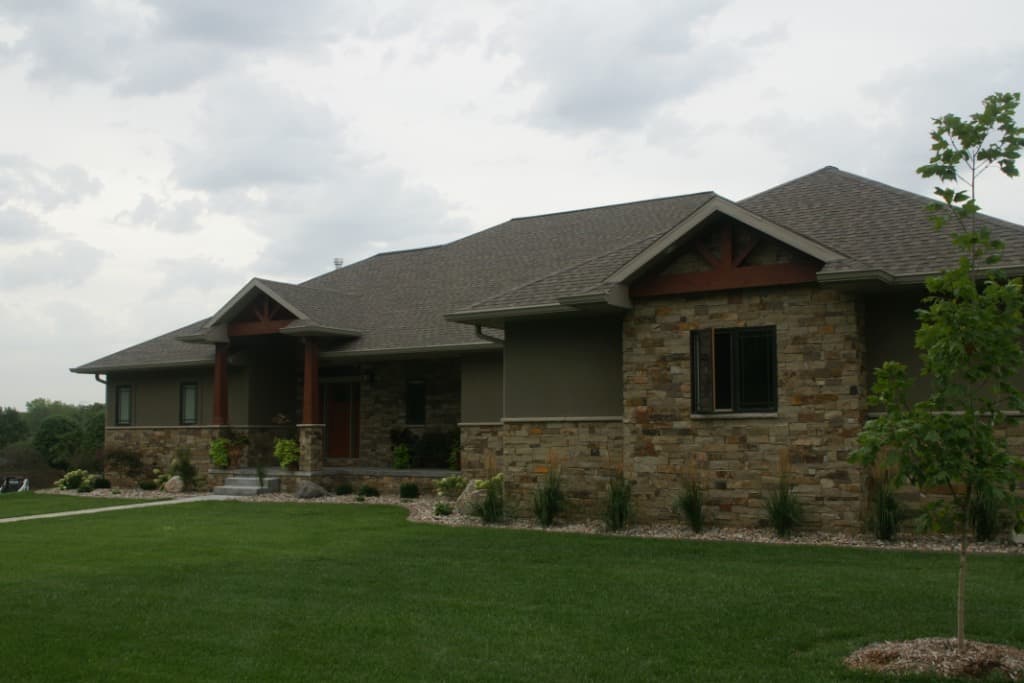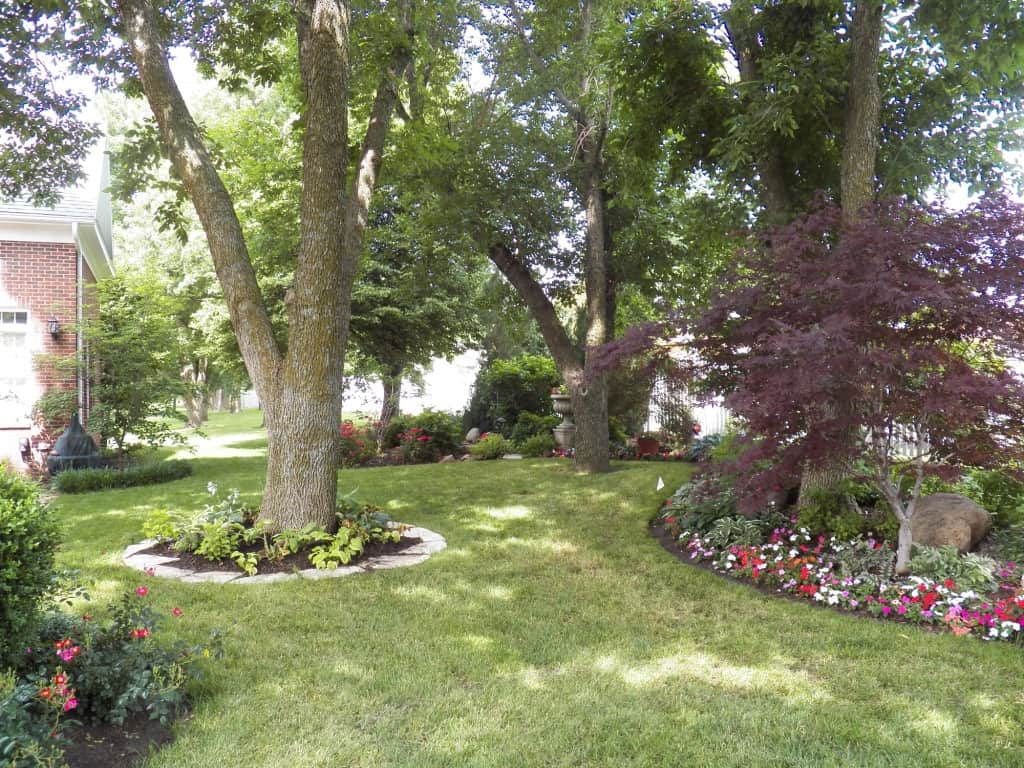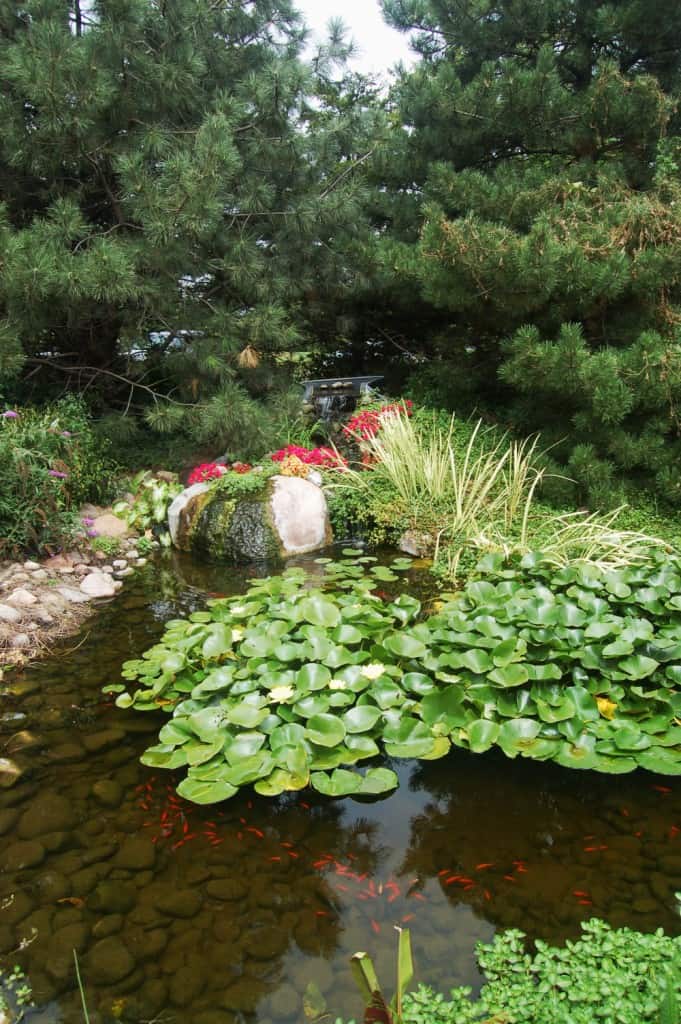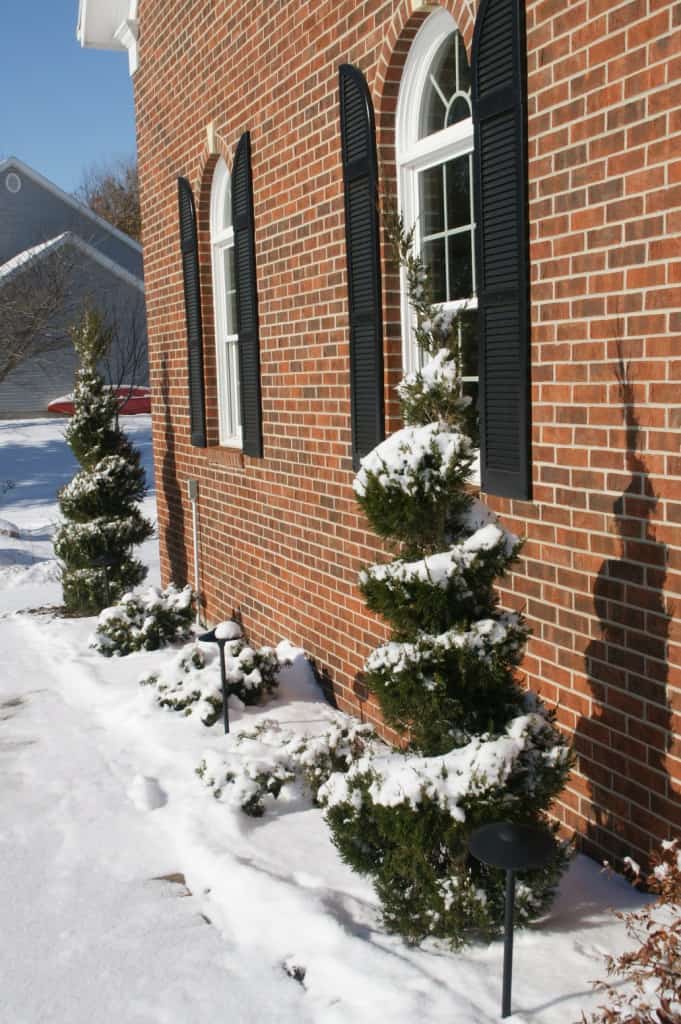When friends and neighbors ask me what I do for Grimm’s Gardens, I have a difficult time explaining my job. As the landscape maintenance foreman, I have a job that entails much attention to detail, a vast knowledge of plant life and growth stages, electrical and plumbing maintenance, and a willingness to work in all types of weather. Landscape maintenance is a year round business, whether you are in the field or at a training to learn better ways to sharpen tools. Those of us who work in the maintenance field have to be ready for any changes that are thrown our way- be it the rapidly changing weather, the short life span of perennials, infestations of insects and disease, or the uncertainty of clients who want to change things themselves.

Why is landscape maintenance so important? When a new landscape is installed, the landscaper may or may not include a detailed care list for clients. This list may include watering procedures, basic care instructions, and cleanup times. However, clients who are more interested in enjoying their landscape than caring for it or who are not horticulturally inclined, may let the landscape go and decide to turn to a professional service such as ours. If a landscape is maintained by a professional crew or green thumb, problems are not only discovered and remedied quickly, but the client has more time to enjoy the things they wanted in the first place-a landscaped yard with lots of color, a hardscape for entertaining, and a soothing water feature.

What is actually done at the landscape level? This is an important question, usually asked at the time of estimating. New clients get a quick answer, but going into depth takes an hour, learning the client’s needs and wants, and explaining the ins and outs of maintenance. The quick answer-we pull weeds, trim shrubs, keep an eye out for pests, plant annuals, and cleanup beds. Sounds basic, but what we do is far more complicated. Yes, we pull weeds, after we identify them, determining whether they need to be sprayed with an herbicide or just pulled out. Some weeds have long taproots that cannot be pulled. Knowing the difference between an annual and a perennial weed can save time in the future.
Shrub trimming, you bet! While I am personally against lollipopping small trees and shrubs, I will trim a shrub to shape for a client if requested. However, I will not use noisy, gas powered shears to the purpose. My crews are trained to use hand trimmers and shears for a professional appearance. We are quick, safe, and quiet. Another aspect of plant care is knowing which shrubs get pruned when. For example, spring flowering shrubs like forsythia should only be pruned after flowering. Summer and fall flowering shrubs, like Japanese spirea should be pruned in spring, before the plants wake up. And then there are viburnums, some of which flower in spring and some of which flower in summer or fall. Knowing all these differences in shrub types can make the difference in whether a landscape has healthy shrubs or not.

Then there is the cutting back of perennials and grasses. Some grasses can be sheared 3” to 6” above the ground, while others cannot be cut back effectively, but will do better with burning. Then we come to perennials. There are thousands of perennials available to the gardener and with them comes thousands of care tips, pruning times, and deadheading. For example, did you know that false indigo (Baptisia australis) can be simply knocked down in the spring? It does not require cutting. Then there is liriope, which may or may not need cut back in the spring. And then there is Sedum spectabile (Autumn Joy), which grows at such a speedy rate that it needs divided every third year. With all the additions of new perennial and cultivars every year, it takes a lot of dedication by professionals to keep up with them.
Plants have problems. We as landscape professionals have to be aware of all the old problems as well as keep up with new ones brought over from other continents. Most clients can see insects only as bad, if they are not bees or butterflies. There is a complexity of the insect world that would scare most from even thinking about maintaining their landscapes. As a maintenance foreman, I have to know what the insect is, whether it is beneficial or not, and whether or not it needs treated for. Many times, I find problem insects in a landscape, but they do not require chemical or cultural control, because beneficial insects are present and taking care of the problems for me. And there are diseases, some of which have no effective control and the best option is removing the plants and replacing it with something else.

Then there are all the extra things we do for our clients; pond maintenance, lighting and irrigation repair, edging lifting, mulching, tree care, leaf removal, annual plantings, fertilization and soil testing, and specialty pruning. We have to be able to understand the complexities of pond care, from pump maintenance to pH balance to fish diseases. Then there is the knowledge of low voltage wiring, light bulb types and sizes, drip irrigation tubing, sprinkler head repair, and irrigation timers and how to set them. We get asked to clean out sod and turf from steel edging as well as lifting the edging when it moves from frost heaving. We must know the different types of mulch and how to estimate for spreading it, and then ways of making it look smooth and even. While tree care is often considered an extra option to a maintenance package, we do keep an eye on and lightly prune trees for all our clients. Tree pests and diseases are just as numerous as perennials and knowing the species of tree beforehand is important.
Annual plantings are much more complex too, than they sound. I or a designer must pick out multiple plant choices and group them together in a cohesive planting that will not only last four to five months, but will also bloom and provide color for that whole time. We also have to find ways of creating water wise container plantings for clients who do not have time to water every day. We also have a choice of fall or spring leaf cleanups as an extra for our clients, but leaf pickup continues through the year. We do collect the bulk of leaves in spring, but there are always leaves blowing in from elsewhere and we pick them out of shrubs and perennials on every visit. Fertilization means knowing what nutrients a certain plant requires for optimum growth, when to apply it, and how much to apply. And do not forget specialty pruning. Our workers are trained to prune spirals, topiary, and espaliers.

If you did not know what landscape maintenance meant before this, I hope you have an understanding now. We have a lot to know, and always have a lot to learn. If all this sounds overwhelming for you, then please call Grimm’s Gardens for landscape maintenance services today!



